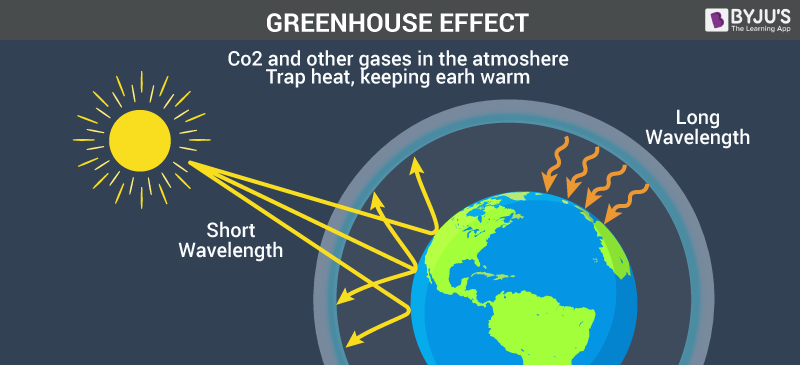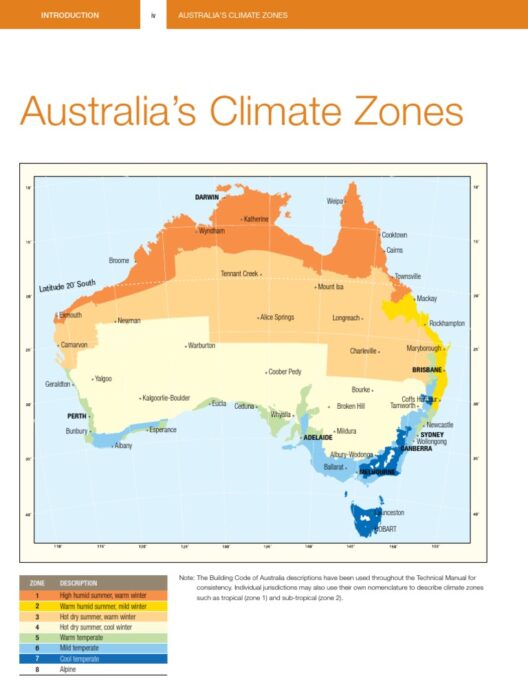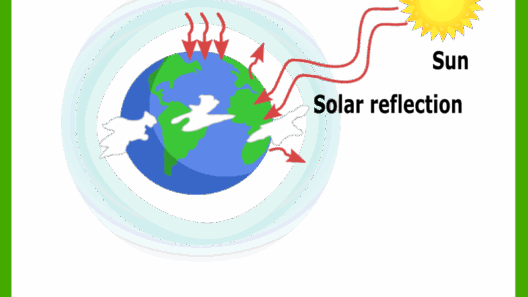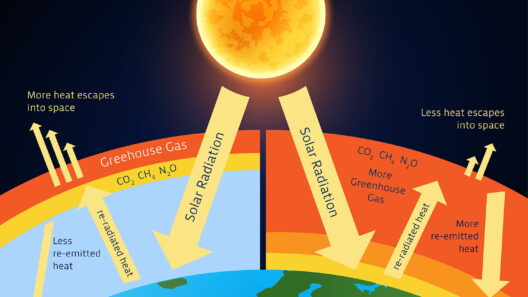The atmosphere around our planet acts as a delicate blanket, one that has sustained human civilization and life as we know it. However, as we delve into the intricacies of this phenomenon, we uncover a crucial aspect that has garnered immense attention in recent decades – the greenhouse effect. Understanding the drivers of this effect is integral not only for scientists but for every individual invested in the health of our planet.
The greenhouse effect occurs when certain gases in the Earth’s atmosphere trap heat, allowing solar radiation to enter the biosphere while preventing some of it from escaping back into space. This natural process is vital for maintaining a livable climate; without it, Earth would be inhospitable, languishing in temperatures far too frigid to support life. Yet, the conundrum arises as human activities exacerbate this effect, leading to unprecedented levels of global warming.
In this exploration of what causes the greenhouse effect, we need to dissect the various elements that contribute to the concentration of greenhouse gases—most notably carbon dioxide, methane, nitrous oxide, and fluorinated gases. Each of these gases has its own unique origins and roles in our atmosphere.
In this discussion, we will unravel these contributing factors step by step.
Understanding Greenhouse Gases: The Core Components
The primary players in the greenhouse effect are gases that possess the capability to absorb and emit infrared radiation. This property is responsible for their heat-trapping characteristics, leading to a warmer atmosphere. Below, we elucidate each of the key greenhouse gases, their sources, and their implications on climate change.
Carbon Dioxide (CO2): The Silent Giant
Carbon dioxide has long been recognized as the quintessential greenhouse gas. It results predominantly from the burning of fossil fuels such as coal, oil, and natural gas for electricity and heat. Deforestation also exacerbates CO2 levels as trees—which act as carbon sinks—are felled, eliminating a vital means of carbon sequestration.
Furthermore, industrial processes and certain agricultural practices release carbon dioxide into the atmosphere. The sheer volume of CO2 emitted makes it a significant contributor to the enhanced greenhouse effect, leading to higher global temperatures.
Methane (CH4): The Potent Leader
Methane, although less prevalent than carbon dioxide, boasts a much greater potential to trap heat — roughly 25 times more effective over a 100-year period. Major sources of methane emission include agricultural practices, particularly enteric fermentation from livestock, as well as the decomposition of organic waste in landfills. Natural gas production and transport also contribute substantially, releasing methane into the atmosphere through leaks and venting.
The alarming increase in methane levels, predominantly linked to rising livestock production and industrial agriculture, warrants urgent attention, as its potency significantly heightens the implications for climate change.
Nitrous Oxide (N2O): The Unseen Contributor
Nitrous oxide is another greenhouse gas that requires acknowledgment. Emitted primarily from agricultural and industrial activities, it results notably from the use of synthetic fertilizers. As crops are cultivated with these fertilizers, nitrous oxide is released into the atmosphere through bacterial processes in soils.
Despite being present in smaller quantities when compared to CO2 and methane, nitrous oxide possesses a vastly greater greenhouse effect potential— it is approximately 298 times more potent than carbon dioxide over a century. Hence, its contribution, though seemingly minuscule, plays a noteworthy role in complicating the climate crisis.
Fluorinated Gases: Industrial Offenders
Fluorinated gases represent a group of entirely man-made gases, which include hydrofluorocarbons (HFCs) and perfluorocarbons (PFCs). They are primarily released during industrial processes, refrigeration, and air conditioning. Though their concentrations in the atmosphere are relatively low, their potent heat-trapping abilities contribute to global warming, with some of them having a global warming potential thousands of times greater than that of carbon dioxide.
The significant ramifications of using these gases emphasize the urgency for sustainable and eco-friendly alternatives in industry and technology.
The Role of Human Activities: Beyond the Gases
It is imperative to underscore that greenhouse gas emissions are intricately tied to human activities, reflecting choices and practices that have far-reaching implications. Multiple facets of everyday life contribute to the escalating levels of greenhouse gases.
Fossil Fuel Dependency
One of the leading factors driving the greenhouse effect is humanity’s unwavering reliance on fossil fuels. The energy sector’s investment in non-renewable energies not only exacerbates CO2 emissions but also subverts advancements in renewable technologies. Transitioning to renewable sources like wind, solar, and geothermal is crucial to mitigate this predicament.
Agricultural Practices: Feeding the Future
As the global population burgeons, agricultural practices have escalated, particularly in intensive farming and livestock production. The resultant emissions of methane and nitrous oxide are staggering, necessitating an evaluation of sustainable farming methods, diversified cropping, and responsible livestock management to safeguard both food security and the climate.
Deforestation: The Hidden Adversary
Deforestation stands as an insidious force against the fight to mitigate greenhouse gases. The removal of forests not only releases carbon dioxide but also undermines natural processes that regulate the climate. Efforts to curb deforestation and promote reforestation are key in balancing carbon emissions with carbon capture.
As we strive to comprehend the complexities of the greenhouse effect, the interconnectivity of natural and anthropogenic processes reveals itself. Not just a result of greenhouse gases, the overarching phenomena reflect choices made across generations. The narrative we unfold today carries within it the urgency for pivotal change, granting everyone a critical role in combatting climate change.
In this trial of resilience against the forces affecting our planet’s climate, understanding the causes behind the greenhouse effect is not merely an academic exercise; it is a clarion call to action for environmental stewardship and conscious living.







